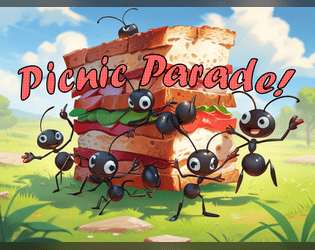Thank you so much for sharing your insights and experience with the game! I had a lot of fun putting it together in such a short span of time, and it’s always wonderful to learn that someone got something out of it.
The finish tile addition was a late playtesting improvement to help reinforce the idea of needing one last ant to actually cross the finish line. It was added to the rulebook, but I got my versions crossed somewhere, and by the time I realized it… the Jam was locked.
I had envisioned expanding the card pool to open up more give and take in the ant-economy. However, give the limited time frame of the Jam, combined with my personal schedule, I chose to deliver on the concept first and leave the tuning for later.
I ended up making just enough to show variety and the possibility of success … with the push-your-luck element being very risky. In a final project, the probabilities can be adjusted in any number of directions. I did, however, focus on trying to keep the delivery of the game within a small footprint… like a pocket game, with a sample play area printed on the rule sheet that would not be required, but could be unfolded and used.
Truthfully, I was surprised myself at how fun my playtesting of the submitted tile set turned out. I likewise wanted to expand on the give-and-take of ants. I even wanted to try out little 🐜 tokens or images to represent the “parade” of ants on the board. In the end I ran out of time to make major modifications so I just stuck with the prototypical design and delivered everything barely in time.
Keeping the project alive, I am tinkering with rules for a multiplayer version, in addition to an expanded solo version without the limitations of the Jam. If it lands well, it may end up as one of my future pitches for publication.


